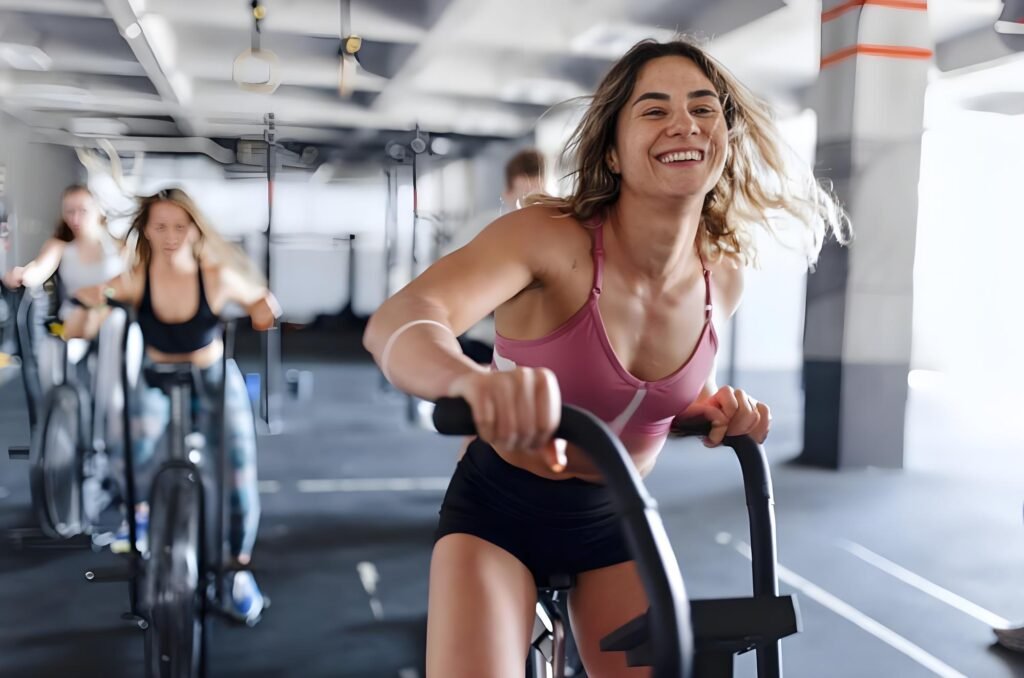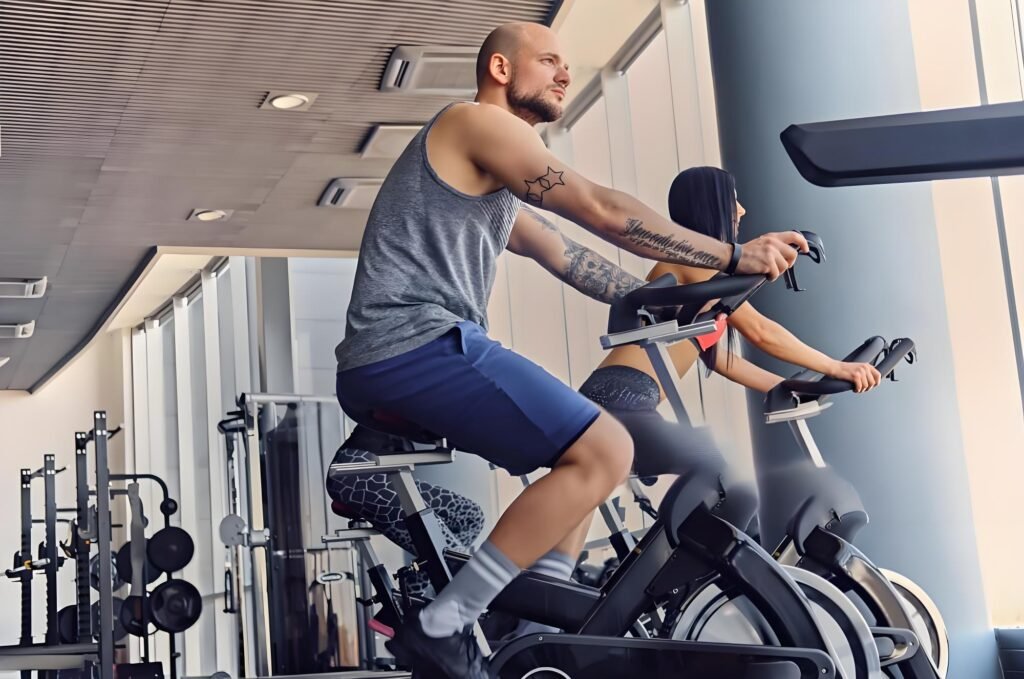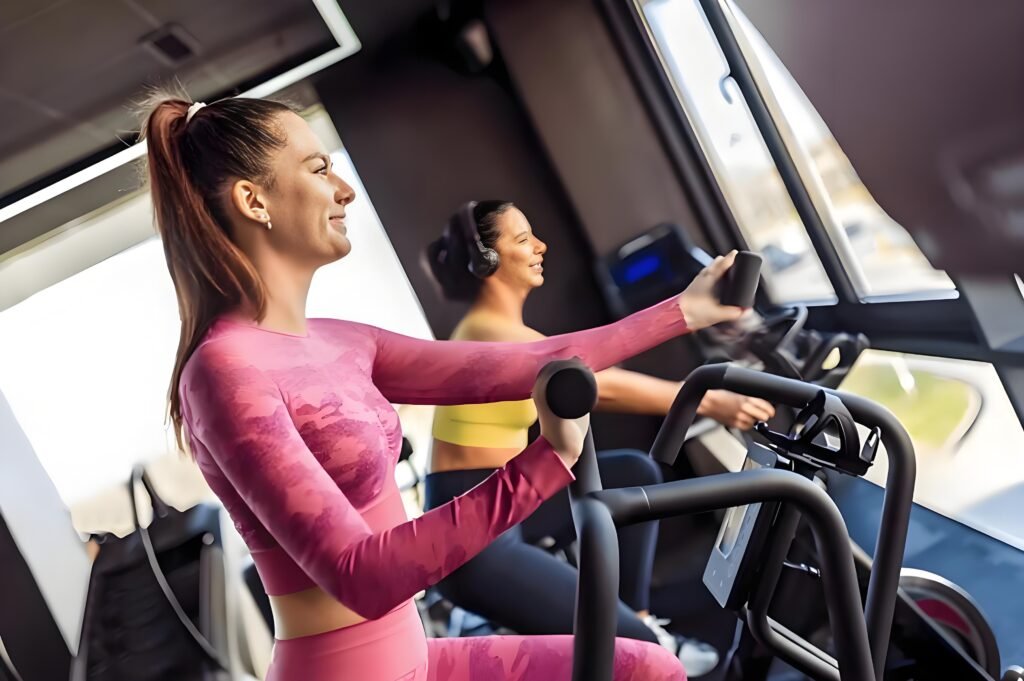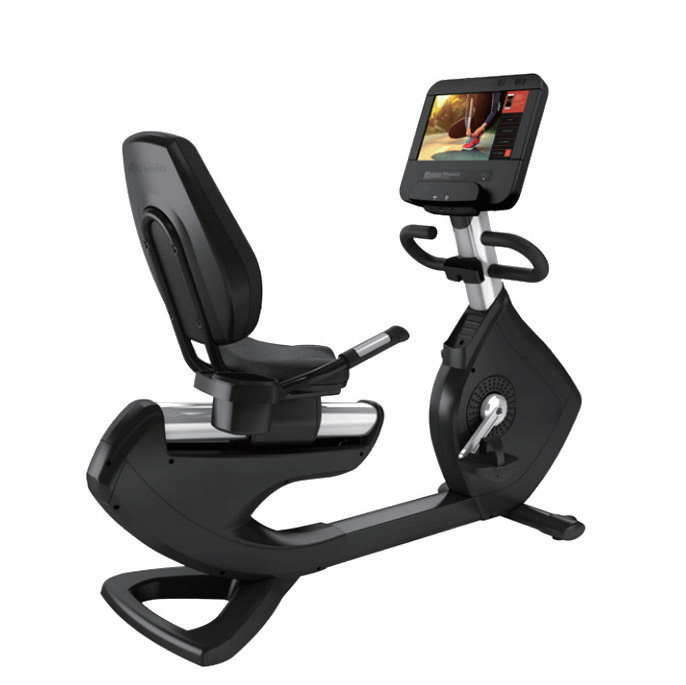Walking into a gym, the spinning area is always bustling with activity—the throbbing music paired with the rhythmic pedaling rhythm has become the go-to for many people looking to lose weight and sculpt their figure. Nowadays, more and more people are buying spinning bikes at home, but many still have questions: Is it considered aerobic or anaerobic? What body parts does it target? And how do you choose the right one? This article addresses these three core questions, helping you clarify misconceptions and providing practical guidance for efficient riding and rational purchasing.

Is spinning an aerobic or anaerobic exercise?
The type of exercise a spinning bike performs isn’t absolute; it’s primarily determined by the intensity and style of riding. While most cycling is primarily aerobic, high-intensity interval cycling can have anaerobic characteristics.
During regular cycling, if the intensity is maintained for at least 30 minutes, the body relies on aerobic metabolism for energy, improving cardiopulmonary function. This is also a common pattern in gym spinning classes, embodying the “low-intensity, long-duration” characteristics of aerobic exercise. However, if resistance is suddenly increased, the cadence is accelerated, or a “sprint-and-rest” interval pattern is employed, the heart rate can soar to over 80% of the maximum heart rate. This depletes the body’s oxygen supply and forces it to rely on anaerobic metabolism, producing lactic acid, which then exhibits anaerobic characteristics.
In summary, spinning bikes offer flexibility in switching between different types of exercise. For daily fitness, aerobic training can be the primary focus, while those seeking explosive power can incorporate anaerobic training.

Where can I exercise on a spinning bike?
Spinning is a whole-body, coordinated sport, focusing core training on the lower extremities while also engaging the core and upper extremities.
The lower extremities are the primary power source. Cycling continuously exercises the quadriceps femoris in the front thighs, the hamstrings in the back thighs, and the gastrocnemius and soleus muscles in the calves. Long-term practice can enhance lower extremity strength and endurance, while also improving leg definition. Furthermore, to maintain stability during cycling, the core muscles in the waist and abdomen are constantly engaged, supporting the torso and indirectly improving core stability. Gripping the handlebars for control and balance also gently exercises the biceps, triceps, and shoulder muscles. Furthermore, sustained cycling requires constant energy from the heart and lungs, effectively strengthening cardiopulmonary function and improving aerobic metabolism.

How to choose a suitable spinning bike?
When choosing a spinning bike, focus on core performance and user experience. Gettinglong’s spinning bikes are perfectly matched to the needs of both fitness clubs and home use.
First, consider the core features: Our spinning bikes are equipped with a silent magnetic control system, ensuring a quiet and unobtrusive ride. The weighted flywheel design ensures stable movement and prevents wobbling. The leather non-slip seat and adjustable handlebars/seat accommodate different heights and body types, ensuring comfortable sitting for extended periods. We also pay attention to the details: the body is constructed of thickened steel for high load-bearing and durability; an emergency brake ensures safety; and custom logos are available to meet club branding needs.
As a source manufacturer, we eliminate middlemen, provide cost-effective products, and provide reliable delivery services to help you choose a spinning bike that’s suitable for your needs and of reliable quality.

Conclusion
From distinguishing the essence of aerobic and anaerobic exercise to understanding core body parts and mastering key purchasing tips, this knowledge can help you avoid misconceptions about spinning bikes. Choosing the right equipment and using it effectively will make your sweat worthwhile. We hope you’ll find the joy of spinning and improve your fitness through persistence.

